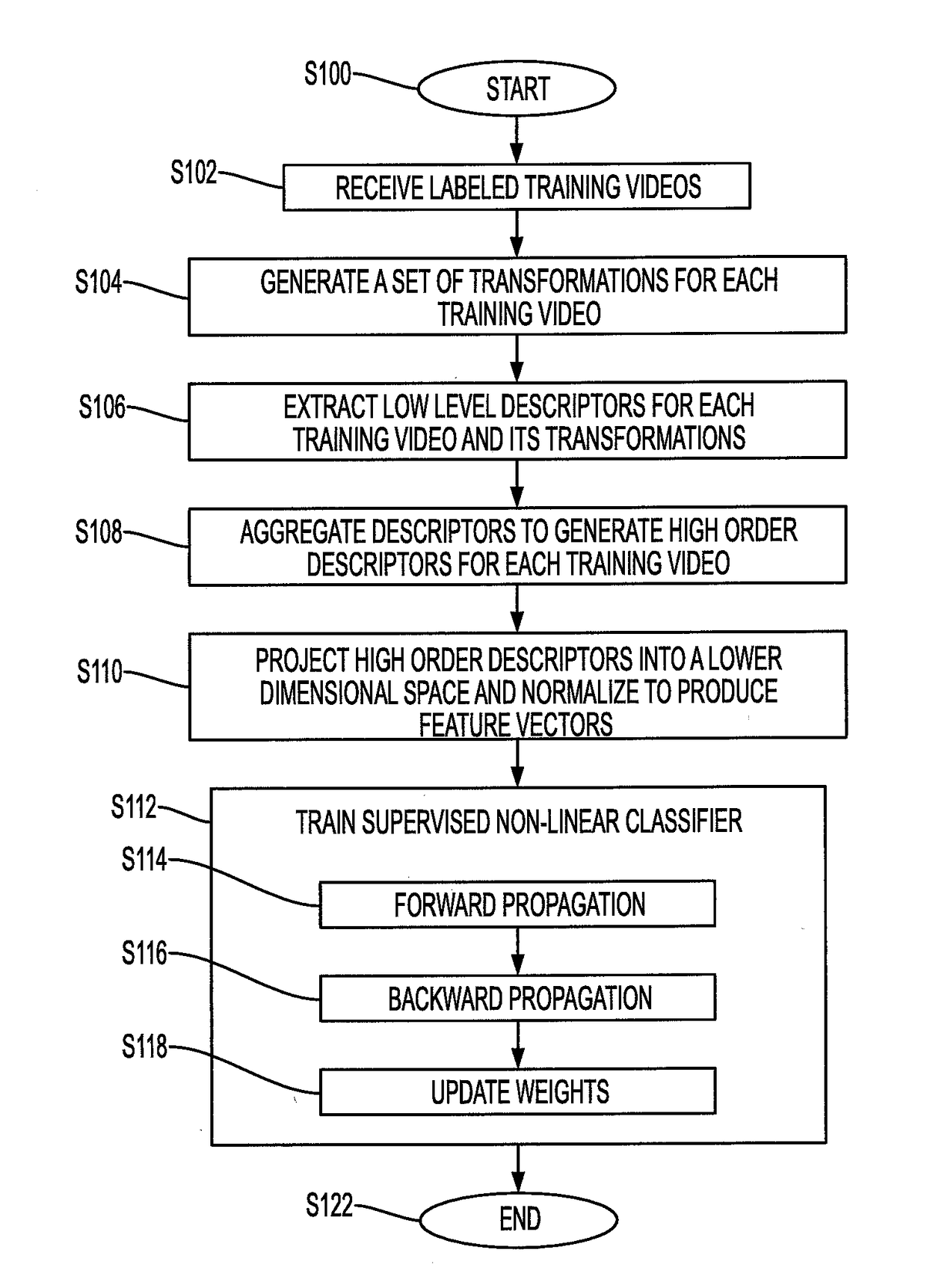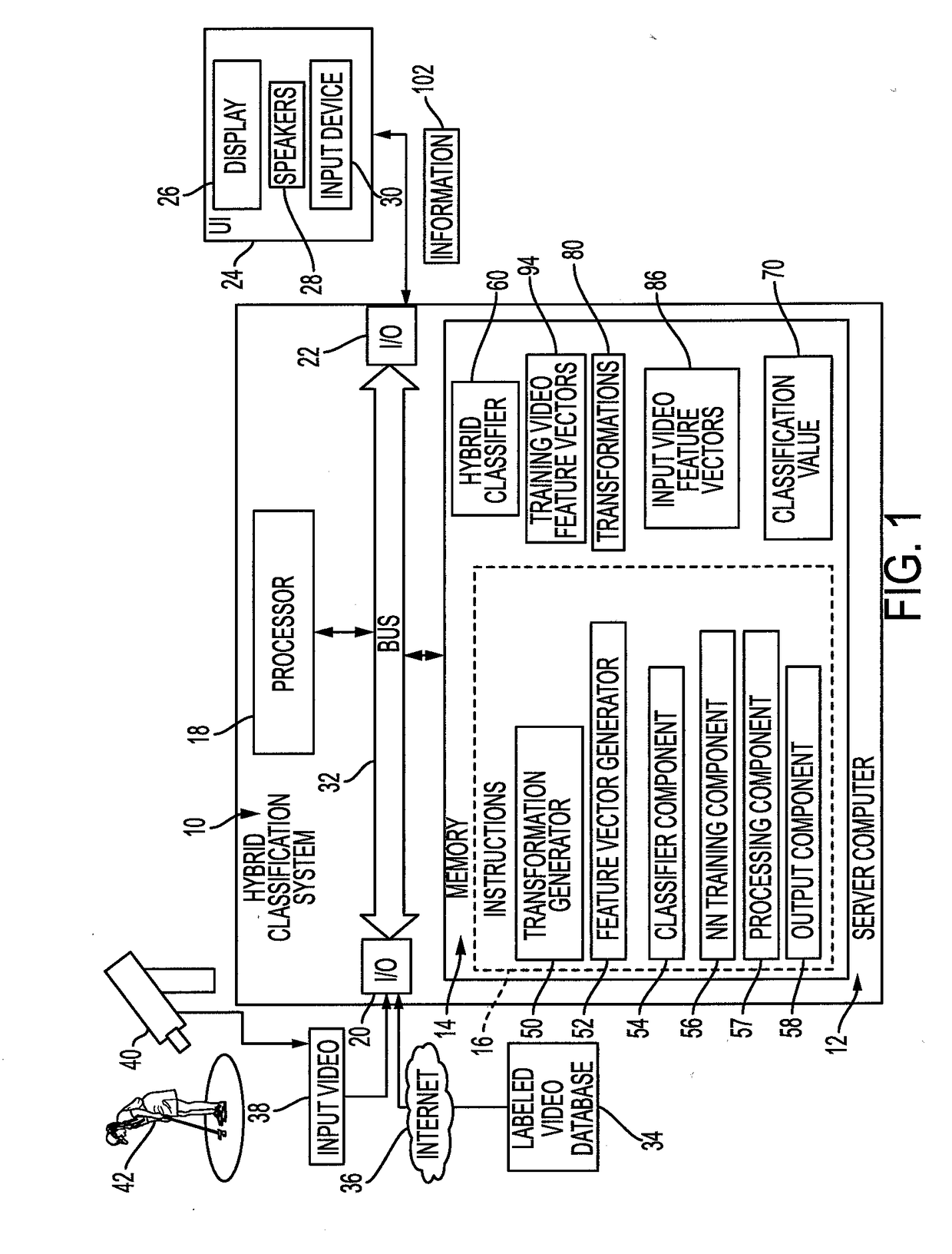System and method for video classification using a hybrid unsupervised and supervised multi-layer architecture
a multi-layer architecture and video classification technology, applied in the field of video camera-based systems to video classification, processing and archiving arts, can solve problems such as lack of flexibility, impede their robustness or modeling capacity, and complexity arises
- Summary
- Abstract
- Description
- Claims
- Application Information
AI Technical Summary
Benefits of technology
Problems solved by technology
Method used
Image
Examples
examples
[0100]Five publicly available and common datasets for action recognition are used.
[0101]Hollywood2: This dataset contains 1,707 videos extracted from 69 Hollywood movies, distributed over 12 overlapping action classes. As one video can have multiple class labels, results are reported using the mean average precision (mAP). See, Marszalek, et al., “Actions in context,” CVPR, (2009).
[0102]HMDB-SI: this dataset contains 6,849 videos distributed of 51 distinct action categories. Each class contains at least 101 videos and presents a high intra-class variability. The evaluation protocol is the average accuracy over three fixed splits (% mAcc). See, Kuehne, et al. “HMDB: a large video database for human motion recognition,” ICCV, (2011).
[0103]UCF-101: This dataset contains 13,320 video clips distributed over 101 distinct classes. See, Soomro, et al. “UCF101: A dataset of 101 human actions classes from videos in the wild,” arXiv:1212.0402 (December 2012). The performance is again measured ...
PUM
 Login to View More
Login to View More Abstract
Description
Claims
Application Information
 Login to View More
Login to View More - R&D
- Intellectual Property
- Life Sciences
- Materials
- Tech Scout
- Unparalleled Data Quality
- Higher Quality Content
- 60% Fewer Hallucinations
Browse by: Latest US Patents, China's latest patents, Technical Efficacy Thesaurus, Application Domain, Technology Topic, Popular Technical Reports.
© 2025 PatSnap. All rights reserved.Legal|Privacy policy|Modern Slavery Act Transparency Statement|Sitemap|About US| Contact US: help@patsnap.com



